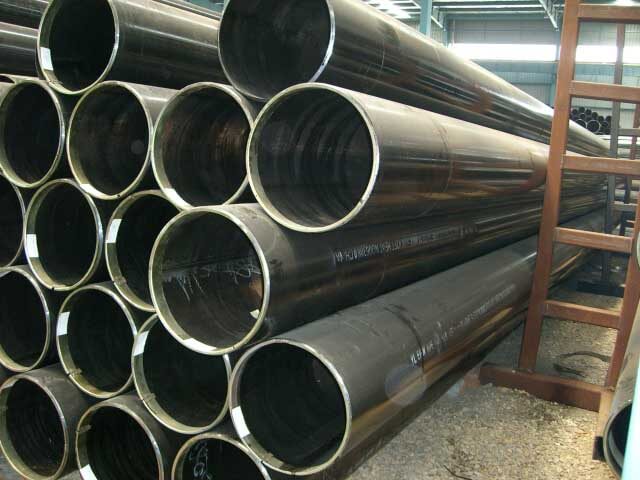-
Cangzhou Yulong Steel Co., Ltd.
-
Phone:
+86 13303177267 -
Email:
admin@ylsteelfittings.com
- English
- Arabic
- Italian
- Spanish
- Portuguese
- German
- kazakh
- Persian
- Greek
- French
- Russian
- Polish
- Thai
- Indonesian
- Vietnamese
- Zulu
- Korean
- Uzbek
- Hindi
- Serbian
- Malay
- Ukrainian
- Gujarati
- Haitian Creole
- hausa
- hawaiian
- Hebrew
- Miao
- Hungarian
- Icelandic
- igbo
- irish
- Japanese
- Javanese
- Kannada
- Khmer
- Rwandese
- Afrikaans
- Albanian
- Amharic
- Armenian
- Azerbaijani
- Basque
- Belarusian
- Bengali
- Bosnian
- Bulgarian
- Catalan
- Cebuano
- China
- China (Taiwan)
- Corsican
- Croatian
- Czech
- Danish
- Esperanto
- Estonian
- Finnish
- Frisian
- Galician
- Georgian
- Kurdish
- Kyrgyz
- Lao
- Latin
- Latvian
- Lithuanian
- Luxembourgish
- Macedonian
- Malgashi
- Malayalam
- Maltese
- Maori
- Marathi
- Mongolian
- Myanmar
- Nepali
- Norwegian
- Norwegian
- Occitan
- Pashto
- Dutch
- Punjabi
- Romanian
- Samoan
- Scottish Gaelic
- Sesotho
- Shona
- Sindhi
- Sinhala
- Slovak
- Slovenian
- Somali
- Sundanese
- Swahili
- Swedish
- Tagalog
- Tajik
- Tamil
- Tatar
- Telugu
- Turkish
- Turkmen
- Urdu
- Uighur
- Welsh
- Bantu
- Yiddish
- Yoruba

Dec . 25, 2024 18:20 Back to list
ansi class 150 flange
Understanding ANSI Class 150 Flanges A Comprehensive Overview
Flanges play a crucial role in piping systems, providing a reliable and robust means of connecting various components in industrial applications. Among the many types of flanges available, the ANSI Class 150 flange stands out due to its widespread use and efficient performance in low and medium-pressure systems.
What is ANSI Class 150 Flange?
The ANSI Class 150 flange is defined by the American National Standards Institute (ANSI) in conjunction with the American Society of Mechanical Engineers (ASME). It is rated for a specific pressure and temperature combination, making it suitable for various operating conditions. ANSI Class 150 flanges are designed to withstand pressures up to 150 psi at 100°F, accommodating a variety of fluids, including water, steam, and gases.
Key Features and Specifications
The ANSI Class 150 flange is characterized by its dimensions and materials, which adhere to the ASME B16.5 standard. This standard outlines the specifications for flanges used in piping systems, including their size, pressure ratings, and material requirements. The flanges typically feature
1. Material Composition Common materials for ANSI Class 150 flanges include carbon steel, stainless steel, and alloy steel, ensuring durability and resistance to corrosion and wear.
2. Dimensions The size of ANSI Class 150 flanges varies, with standards available for different diameters, thicknesses, and bolt hole patterns. This versatility allows for compatibility with a wide range of pipes.
3. Connection Types ANSI Class 150 flanges can be welded or bolted to pipes, allowing for easy assembly and disassembly. The raised face configuration is the most common, enhancing sealing properties.
Applications of ANSI Class 150 Flanges
These flanges are widely used across different industries due to their multifunctional nature. Common applications include
- Water Supply Systems ANSI Class 150 flanges are often found in water distribution networks, helping to connect pumps, valves, and other components effectively. - Chemical Processing In chemical plants, these flanges are used to connect pipelines that transport various fluids under moderate pressures, ensuring operational safety. - HVAC Systems Heating, ventilation, and air conditioning systems frequently utilize ANSI Class 150 flanges for connecting ductwork and other equipment.
ansi class 150 flange

Advantages of ANSI Class 150 Flanges
1. Cost-Effectiveness Compared to higher-rated flanges, Class 150 flanges tend to be less expensive, making them an attractive choice for many projects.
2. Ease of Installation The standardization of dimensions simplifies installation and maintenance, allowing for faster assembly and reducing labor costs.
3. Versatility Their ability to accommodate different fluids and pressures makes ANSI Class 150 flanges suitable for various applications, enhancing their usability in multiple settings.
Considerations When Choosing ANSI Class 150 Flanges
When selecting ANSI Class 150 flanges, several factors should be taken into consideration
- Operating Conditions Evaluate the pressures and temperatures the flange will encounter during its service. Ensure compatibility with the intended media to prevent leaks or failures.
- Material Selection Choose a material that can withstand the specific environmental conditions, such as corrosive media or extreme temperatures.
- Compliance with Standards Always verify that the flanges meet relevant standards to ensure safety and reliability in your system.
Conclusion
In summary, ANSI Class 150 flanges are essential components in a variety of piping systems across different industries. Their robust design, compatibility, and cost-effectiveness make them a popular choice for engineers and project managers. By understanding their features, applications, and considerations, industries can better leverage ANSI Class 150 flanges to ensure efficient and safe operation in their piping systems. Proper selection and maintenance of these flanges can significantly contribute to the longevity and effectiveness of industrial applications.
Latest news
-
ANSI 150P SS304 SO FLANGE
NewsFeb.14,2025
-
ASTM A333GR6 STEEL PIPE
NewsJan.20,2025
-
ANSI B16.5 WELDING NECK FLANGE
NewsJan.15,2026
-
ANSI B16.5 SLIP-ON FLANGE
NewsApr.19,2024
-
SABS 1123 FLANGE
NewsJan.15,2025
-
DIN86044 PLATE FLANGE
NewsApr.19,2024
-
DIN2527 BLIND FLANGE
NewsApr.12,2024
-
JIS B2311 Butt-Welding Fittings LR/SR 45°/90° /180°Seamless/Weld
NewsApr.23,2024











